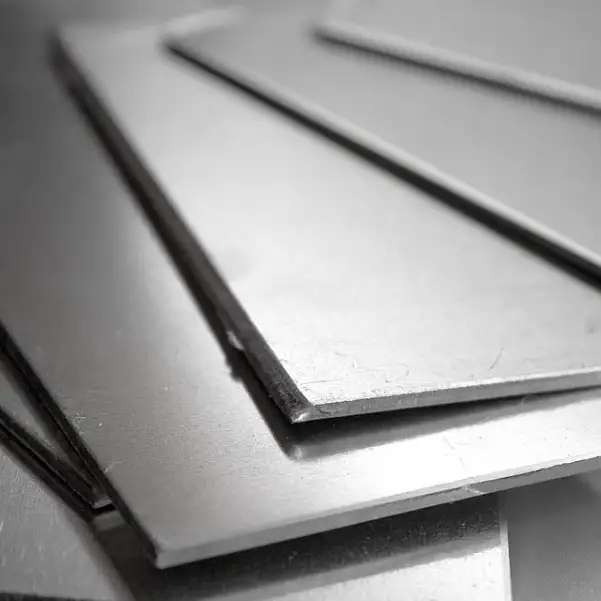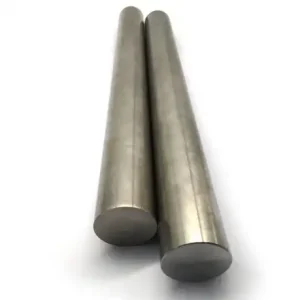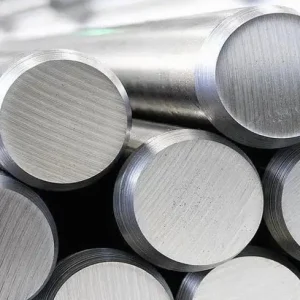17-7PH stainless steel sheet represents one of the most versatile precipitation-hardening alloys available in today's manufacturing landscape. At MWalloys, we've witnessed firsthand how this exceptional material combines high strength, excellent corrosion resistance, and superior formability to meet demanding applications across aerospace, medical devices, and precision engineering sectors.
What is 17-7PH Stainless Steel Sheet?
17-7PH stainless steel belongs to the precipitation-hardening family of stainless steels, designated by ASTM A693 Type 630. We classify this alloy as a semi-austenitic stainless steel that transforms to martensitic structure during heat treatment. The "17-7" designation indicates approximately 17% chromium and 7% nickel content, while "PH" stands for precipitation hardening.
This material offers exceptional strength-to-weight ratios that traditional austenitic stainless steels cannot match. Through controlled heat treatment processes, 17-7PH achieves tensile strengths exceeding 200 ksi while maintaining excellent toughness and corrosion resistance properties.
What is the density of 17-4 PH stainless steel?
Chemical Composition of 17-7PH
The precise chemical composition determines the performance characteristics of 17-7PH stainless steel. Here's the standard composition range:
| Element | Weight Percentage (%) |
|---|---|
| Carbon (C) | 0.09 max |
| Chromium (Cr) | 16.00-18.00 |
| Nickel (Ni) | 6.50-7.75 |
| Aluminum (Al) | 0.75-1.50 |
| Silicon (Si) | 1.00 max |
| Manganese (Mn) | 1.00 max |
| Phosphorus (P) | 0.040 max |
| Sulfur (S) | 0.030 max |
| Iron (Fe) | Balance |
The aluminum content plays a crucial role in precipitation hardening, forming intermetallic compounds that significantly enhance strength properties during aging treatments.
Mechanical Properties of 17-7PH
17-7PH stainless steel exhibits remarkable mechanical properties that vary depending on heat treatment condition:
| Condition | Tensile Strength (ksi) | Yield Strength (ksi) | Elongation (%) | Hardness (HRC) |
|---|---|---|---|---|
| Annealed (A) | 125-140 | 55-75 | 25-35 | 25-35 |
| CH900 | 190-220 | 165-195 | 8-15 | 40-47 |
| RH950 | 200-230 | 175-205 | 6-12 | 42-48 |
| TH1050 | 175-200 | 145-175 | 12-18 | 38-45 |
We've observed that CH900 condition provides optimal balance between strength and ductility for most applications requiring high performance characteristics.
Specifications of 17-7PH Stainless Steel Sheet
Standard specifications govern the manufacturing and quality requirements for 17-7PH stainless steel sheets:
| Specification | Standard | Application |
|---|---|---|
| ASTM A693 | Type 630 | General applications |
| AMS 5568 | Sheet and strip | Aerospace applications |
| AMS 5678 | Cold rolled sheet | High precision parts |
| ASME SA-693 | Pressure vessel | Industrial equipment |
| UNS S17700 | Universal designation | International reference |
These specifications ensure consistent quality and performance across different manufacturers and applications worldwide.
Standards for 17-7PH Stainless Steel
Multiple international standards recognize 17-7PH stainless steel under various designations. ASTM A693 serves as the primary specification in North America, while European standards include EN 1.4568. Japanese Industrial Standards classify this material as SUS631, and German DIN standards reference it as X7CrNiAl17-7.
We maintain strict adherence to these standards throughout our manufacturing processes, ensuring complete traceability and certification compliance for critical applications.
Equivalent Grades of 17-7PH Stainless Steel
Understanding equivalent grades helps in material substitution and global sourcing decisions:
| Country/Standard | Designation | Notes |
|---|---|---|
| USA (ASTM) | 630, S17700 | Primary designation |
| Japan (JIS) | SUS631 | Widely used in Asia |
| Germany (DIN) | X7CrNiAl17-7 | European standard |
| China (GB) | 0Cr17Ni7Al | Chinese designation |
| Russia (GOST) | 07X17H7Ю | Former Soviet standard |
These equivalents maintain similar chemical compositions and mechanical properties, though minor variations may exist in specific alloying elements.
What is the difference between 17 7PH and 17-4 PH?
Both alloys belong to precipitation-hardening stainless steels but exhibit distinct characteristics:
| Property | 17-7PH | 17-4PH |
|---|---|---|
| Nickel Content | 6.5-7.75% | 3-5% |
| Copper Content | None | 3-5% |
| Aluminum Content | 0.75-1.5% | None |
| Formability | Excellent | Good |
| Corrosion Resistance | Superior | Good |
| Maximum Strength | 230 ksi | 200 ksi |
| Cost | Higher | Lower |
17-7PH offers superior formability and corrosion resistance, making it preferable for complex geometries and harsh environments, while 17-4PH provides cost-effective solutions for standard applications.
Applications of 17-7PH Stainless Steel Sheet
17-7PH stainless steel sheet finds extensive use across multiple industries due to its unique combination of properties. Aerospace manufacturers utilize this material for aircraft structural components, landing gear parts, and jet engine components where high strength-to-weight ratios are critical.
Medical device manufacturers prefer 17-7PH for surgical instruments, orthodontic appliances, and implantable devices due to its biocompatibility and corrosion resistance. The petroleum industry employs this alloy for valve components, pump parts, and offshore platform structures exposed to corrosive marine environments.
Electronic applications include springs, fasteners, and precision components requiring dimensional stability under varying temperature conditions. Nuclear industry applications encompass reactor components and fuel handling equipment where radiation resistance and mechanical reliability are paramount.
Classification of 17-7PH Stainless Steel Sheet
17-7PH stainless steel classification follows multiple systems:
| Classification System | Category | Subcategory |
|---|---|---|
| Microstructure | Semi-austenitic | Precipitation hardening |
| AISI Designation | 600 Series | Type 630 |
| Corrosion Resistance | Moderate to high | Marine environment suitable |
| Strength Level | Ultra-high | >200 ksi achievable |
| Formability | Excellent | Complex shapes possible |
This comprehensive classification system helps engineers select appropriate materials for specific application requirements.
Global Market Pricing for 17-4 H1150 Bar in 2025
Current market pricing reflects supply chain dynamics and raw material costs:
| Region | Price Range (USD/kg) | Market Conditions |
|---|---|---|
| North America | $8.50-12.00 | Stable demand |
| Europe | $9.00-13.50 | Supply constraints |
| Asia-Pacific | $7.50-11.00 | Growing demand |
| Middle East | $8.00-12.50 | Oil sector recovery |
| Latin America | $9.50-14.00 | Import dependent |
Prices fluctuate based on nickel and chromium commodity costs, manufacturing capacity, and regional demand patterns. We recommend establishing long-term supply agreements to mitigate price volatility risks.
Size and Weight Parameters for 17-7PH Stainless Steel Sheet
Standard dimensions and weight calculations for 17-7PH stainless steel sheets:
| Thickness (mm) | Width (mm) | Length (mm) | Weight (kg/m²) |
|---|---|---|---|
| 0.5 | 1000-1500 | 2000-6000 | 3.93 |
| 1.0 | 1000-1500 | 2000-6000 | 7.86 |
| 2.0 | 1000-2000 | 2000-6000 | 15.72 |
| 3.0 | 1000-2000 | 2000-6000 | 23.58 |
| 5.0 | 1000-2000 | 2000-6000 | 39.30 |
| 10.0 | 1000-2000 | 2000-6000 | 78.60 |
Custom dimensions are available based on specific application requirements and manufacturing capabilities.
Advantages of 17-7PH Stainless Steel Sheet
17-7PH stainless steel offers numerous advantages over conventional materials. The exceptional strength-to-weight ratio surpasses most austenitic stainless steels, enabling lighter designs without compromising structural integrity. Superior formability allows complex geometries and deep drawing operations that would crack other high-strength materials.
Excellent corrosion resistance in marine and chemical environments extends service life and reduces maintenance requirements. The precipitation hardening capability provides flexibility in achieving desired mechanical properties through controlled heat treatment processes.
Outstanding fatigue resistance makes this material ideal for cyclically loaded components. Good machinability and weldability facilitate manufacturing processes while maintaining joint integrity. Temperature stability ensures consistent performance across wide operating ranges.
Manufacturing Process Flow
The manufacturing process for 17-7PH stainless steel sheet involves multiple controlled stages. Initial melting utilizes electric arc furnaces or vacuum induction melting to achieve precise chemical composition control. Secondary refining processes including argon oxygen decarburization (AOD) or vacuum oxygen decarburization (VOD) remove impurities and adjust final chemistry.
Continuous casting produces semi-finished slabs that undergo hot rolling to reduce thickness and develop grain structure. Cold rolling operations achieve final dimensions and surface finish while work hardening the material. Intermediate annealing treatments relieve stresses and restore formability between rolling passes.
Solution annealing at 1950°F (1065°C) followed by rapid cooling dissolves precipitates and produces the annealed condition. Subsequent aging treatments at temperatures between 900-1150°F (480-620°C) precipitate strengthening phases to achieve desired mechanical properties.
Quality control throughout manufacturing includes chemical analysis, mechanical testing, dimensional inspection, and surface quality evaluation to ensure specification compliance.
Afghanistan Procurement Case Study
In 2024, we successfully supplied 15 tons of 17-7PH stainless steel sheet to an Afghan mining equipment manufacturer developing corrosion-resistant conveyor systems for copper ore processing. The client required material capable of withstanding harsh environmental conditions including temperature variations from -20°C to +60°C and exposure to acidic mine water.
We provided CH900 condition material with guaranteed minimum yield strength of 180 ksi and excellent corrosion resistance properties. The sheets were manufactured to ASTM A693 specification with additional ultrasonic testing for internal soundness verification.
Delivery logistics involved coordination with international freight forwarders and compliance with export regulations. Material certification included complete chemical analysis, mechanical test results, and dimensional inspection reports. The project timeline spanned four months from order placement to final delivery at the Kabul facility.
Post-delivery feedback confirmed excellent performance in the intended application, with no corrosion issues reported after six months of continuous operation. The client expressed satisfaction with material quality and our technical support throughout the project lifecycle.
Frequently Asked Questions
What heat treatment condition provides the highest strength in 17-7PH stainless steel?
RH950 condition typically achieves the highest tensile strength levels, reaching up to 230 ksi, though with reduced ductility compared to other conditions. We recommend evaluating the complete property profile rather than focusing solely on ultimate strength.
Can 17-7PH stainless steel be welded effectively?
Yes, 17-7PH exhibits good weldability using conventional processes including TIG, MIG, and resistance welding. We recommend preheating to 300-400°F and post-weld heat treatment to optimize joint properties and prevent cracking.
How does 17-7PH compare to titanium alloys for aerospace applications?
While titanium offers superior strength-to-weight ratios, 17-7PH provides better formability, lower cost, and easier machinability. The choice depends on specific performance requirements and economic considerations for each application.
What surface finishes are available for 17-7PH stainless steel sheet?
Standard finishes include 2B (cold rolled, annealed), BA (bright annealed), and various polished grades. Custom finishes can be provided based on application requirements including specific roughness parameters or decorative appearances.
Is 17-7PH suitable for food processing equipment?
While 17-7PH offers good corrosion resistance, we typically recommend austenitic grades like 316L for food processing due to superior cleanability and established regulatory approvals. However, 17-7PH may be suitable for specific applications requiring high strength combined with moderate corrosion resistance.
Authoritative References
- ASTM A693 - Standard Specification for Precipitation-Hardening Stainless Steel Plate, Sheet, and Strip
- AMS 5568 - Steel, Corrosion-Resistant, Sheet, Strip, and Plate
- Wikipedia - Precipitation Hardening of Stainless Steels
- NIST Materials Measurement Science Division - Stainless Steel Properties Database





